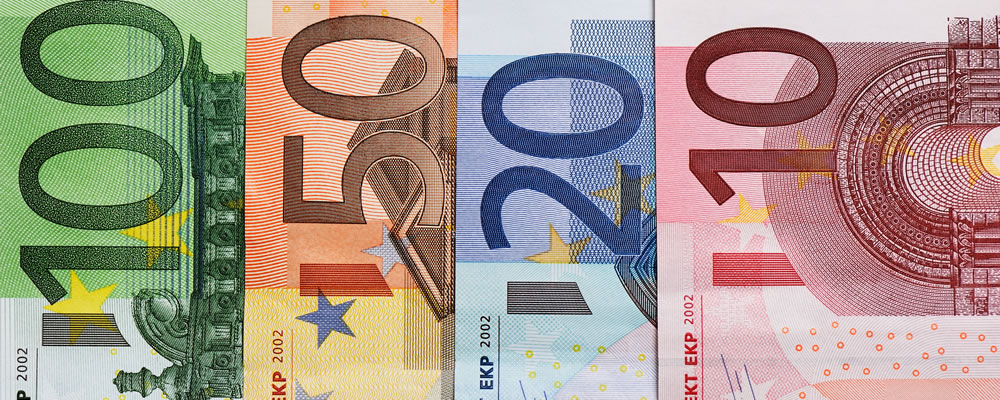With markets bracing for the potential of another political upset over the weekend Euro exchange rates have been trending lower across the board.
- Better-than-expected Eurozone unemployment rate not enough to shore up EUR – Investors focused on political risks facing the currency union
- Speculation over continued UK single market access boosted Pound – EUR GBP exchange rate slumped as Brexit-based anxiety eased
- US Dollar dented by higher jobless claims figures – Forecasts nevertheless remain positive for November Non-Farm Payrolls report
- Loss for Italian PM in referendum expected to undermine Euro confidence – Fears over banking sector predicted to reignite
Confidence in the Pound picked up in response to the latest government communication on Brexit, while the ‘Greenback’ remained supported by expectations of an imminent Fed rate hike.
Italian Referendum Jitters Weighed on EUR Exchange Rates
Although the Eurozone unemployment rate surprised investors to dip below 10% for the first time since April 2011 Euro (EUR) exchange rates failed to capitalise on this positive data. While this stronger showing suggests that the domestic economy is in a healthier state this is unlikely to prompt the European Central Bank (ECB) to reconsider extending its quantitative easing program in December.
Pressure has continued to weigh on the single currency ahead of the two major political events of the weekend, with both the Italian constitutional referendum and the rerun of the Austrian presidential election holding the potential of fresh upsets. Investors are particularly concerned by the outcome of the Italian vote, with Prime Minister Matteo Renzi set to resign in the event of a no victory. Given that Renzi’s plans to support to Italian banking sector are likely to be thrown out by any successor a loss here could stoke renewed concerns over the future of the currency union itself; a prospect which would be severely negative for EUR exchange rates.
Pound (GBP) Jumped on Hopes of Maintained Access to Single Market
The Pound (GBP) saw a sharp surge in response to comments from Brexit Secretary David Davis, who appeared to suggest that the UK could end up paying to maintain its current level of access to the single market. As this pointed towards a softer form of Brexit investors were naturally encouraged, piling into Sterling and driving the Euro Pound (EUR GBP) exchange rate markedly lower. A stronger-than-expected Construction PMI also helped to shore up the Pound ahead of the weekend, demonstrating continued robustness within the sector.
Even so, the level of uncertainty surrounding the government’s Brexit plans is likely to keep the upside potential of the Pound limited for the foreseeable future. As actual negotiations are far from underway worries over the future of the UK economy outside the EU are not expected to go away any time soon. Monday’s Services PMI could offer a fresh rallying point for Sterling, though, with a strong showing from the main engine of economic activity likely to return the EUR GBP exchange rate to a bearish footing.
EUR USD Exchange Rate Forecast to Trend Lower on Solid US Payrolls
Demand for the US Dollar (USD) faltered on Thursday in response to unexpectedly higher jobless claims figures, which undermined confidence in the health of the domestic labour market. Although the latest manufacturing data proved rather more encouraging this was not enough to dent the resurgent Euro US Dollar (EUR USD) exchange rate. While a resilient manufacturing sector is positive this is of generally less concern to Fed policymakers, who remain focused on inflation and employment conditions in assessing monetary policy.
However, as expectations for November’s Non-Farm payrolls report remain high it was ultimately not long before the appeal of the ‘Greenback’ started to pick back up again. As researchers at Nomura noted:
‘With the pace of job gains holding steady and further declines in the insured unemployment rate (continued jobless insurance claimants divided by covered employment), we expect the unemployment rate to decline further to 4.8% in November. On wages, we expect growth in average hourly earnings to slow to 0.1% m-o-m (2.7% y-o-y) following a sharp increase of 0.4% m-o-m in the previous month.’
Should the headline figure fall short of expectations, though, the EUR USD exchange rate could make some renewed gains heading into the weekend.
Current Interbank Exchange Rates
At the time of writing, the Euro Pound (EUR GBP) exchange rate was trending lower around 0.84, while the Euro US Dollar (EUR USD) exchange rate was trending narrowly at 1.06.



